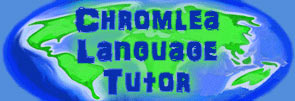History of the Spanish Language and Other Facts
Spanish is spoken around the world by over 400 million speakers (around 350 million native speakers and 70 million as a second language), which makes it one of the most spoken languages in the world. In fact, it is the second most spoken native language used in the world today after Mandarin Chinese.
Fittingly, Spanish had it's origin in Spain as a dialect of Latin, where it would later become the main language of traders and government officials alike. From there it would spread to America and other regions around the world by Spanish explorers.
Though Spanish originated in Spain, it has since grown dramatically outside of the country of origin. In fact, by numbers alone, Spain as a country has only the third most native Spanish speakers. Both Mexico and the United States have more native speakers of the Spanish language.
Don't be fooled however into thinking that Spain is losing its Spanish speaking population. The numbers are due to Spain having a much smaller population, with nearly all (99%) of the residents still speaking Spanish. Mexico and America come in at a 99% and 15% Spanish speaking population respectively.
Which Countries Have Spanish as an Official Language?
- Argentina
- Bolivia
- Chile
- Colombia
- Costa Rica
- Cuba
- Dominican Republic
- Ecuador
- El Salvador
- Equatorial Guinea
- Guatemala
- Honduras
- Mexico
- Nicaragua
- Panama
- Paraguay
- Peru
- Puerto Rico
- Spain
- United States (but only in New Mexico)
- Uruguay
- Venezuela
What Special Characters are Found in the Spanish Alphabet?
Latin Letters and Accents
Using the Latin alphabet (A, B, C, D...) and the character "ñ" as well as some accents ("é"), and you will have all that is needed to write in Spanish.
* It may be noted that though not a standard, accents are typically omitted in capital letters.
Inverted Characters
Spanish question marks and Spanish exclamation marks are used in the same manner as traditional question/exclamation marks in English, except that the characters are written upside down. To finish off any interrogative or exclamatory clauses you can use the inverted Spanish question mark ("¿") or inverted Spanish exclamation mark ("¡") in place of "?" and "!" respectively.
Next Up
Spanish Loan Words: Learn how to say easy Spanish loan words.
Essential Spanish Learning Materials
English/Spanish Dictionaries
Spanish Phrase Books
Beginner's Spanish
Intermediate Spanish
Advanced Spanish
Comprehensive Spanish
Spanish for Careers
Spanish Learning Materials for Kids
Spanish Vocabulary Builders
Spanish Verbs
Spanish Grammar
Spanish Pronouns & Prepositions
Spanish Readers
For the full selection, please visit our: Spanish Language Learning Shop
The Fine Print


